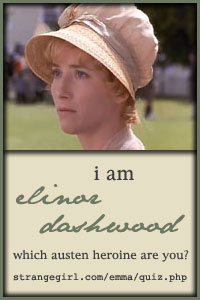Canst thou, O partial sleep, give thy repose
To the wet sea-boy in an hour so rude;
And in the calmest and most stillest night,
With all appliances and means to boot,
Deny it to a king? Then, happy low, lie down!
Uneasy lies the head that wears a crown.
To the wet sea-boy in an hour so rude;
And in the calmest and most stillest night,
With all appliances and means to boot,
Deny it to a king? Then, happy low, lie down!
Uneasy lies the head that wears a crown.
The reign of Henry IV draws to a conclusion in the third of Shakespeare's series of history plays. Though less known (and less loved) than Part 1, there are moments of mirth and heartbreak that will remain with the reader (or audiance) forever.
The Plot:
Part 2 picks up right where Part 1 leaves off. Hotspur is slain, but there are other rebellious parties that must be defeated. Prince John of Lancaster rides to the north to engage the armies of the Archbishop of York. Sir John Falstaff makes his way, slowly, behind him gathering men for the royal forces along the way. Prince Hal seems to slip back into his old habits and company, again grieving his father. And King Henry IV is weighed down by his crown and feels he is reaching the end of his reign.
My Review (Caution - Spoilers):
As a follow up to Part 1, this particular play seems less dramatic and not as tightly written. There are no battle scenes, less time is spent amongst the rebels, and Prince Hal and Falstaff only encounter each other twice. But there were some stand out ideas and scenes that definitely stuck with me.
The first is the decline of King Henry IV. He is a man who gained his crown through rebellion and has had to fight every moment of his reign to keep it. His dream of leading a crusade to the Holy Land slowly fades as he realizes that his health and the rebellion in the kingdom will never allow it. Though he gained what he wanted (the throne of England) he was never able to enjoy it in peace. His greatest achievement became his greatest curse. He hopes that Prince Hal will have a more peaceful reign since he will attain the crown legitimately, through inheritance.
The most important part of this play is the transformation of Prince Hal to Henry V. At the beginning of the play, it seems that he has slipped back into his old habits. He continues to frequent his old haunts and spend his nights in pleasure. And yet, it becomes apparent that his perspective is changing. As his father lies on his deathbed, he considers how much the crown cost the king and what a weight of responsibility it is. His acceptance of this responsibility and his change in behavior is both wonderful and heartbreaking. It was good to see him accept the Lord Chief Justice (who had openly scolded his wild behavior) as a mentor. On the other hand, his dismissal and banishment of his former companions, including Falstaff, comes across as rather harsh. Though we know that Falstaff is a fool and not someone who should be close to a king, it is obvious that his love for Hal is genuine. The betrayal he felt must have been devistating.
This is probably the weakest of the Shakespeare plays I have read this summer, yet it is one that should be read along with the other three in the series. It certainly outlines the burden that comes with power and the strength of character needed to rule wisely.
The Performance:
Though
reading Shakespeare is fun, it is also important to see it performed.
Shakespeare gives few stage directions and this allows each individual
give their own interpretation of the characters an their actions.
As with Part I, I watched the 2012 production included in BBC's The Hollow Crown. It stars Jeremy Irons, Tom Hiddleston, Simon Russell Beale, David Bamber, and Geoffrey Palmer. It was a wonderful production that beautifully conveyed the heavy emotion of the play. Definitely worth watching.
Do you have a favorite performance of the this play? Share with us in the comments!

















No comments:
Post a Comment